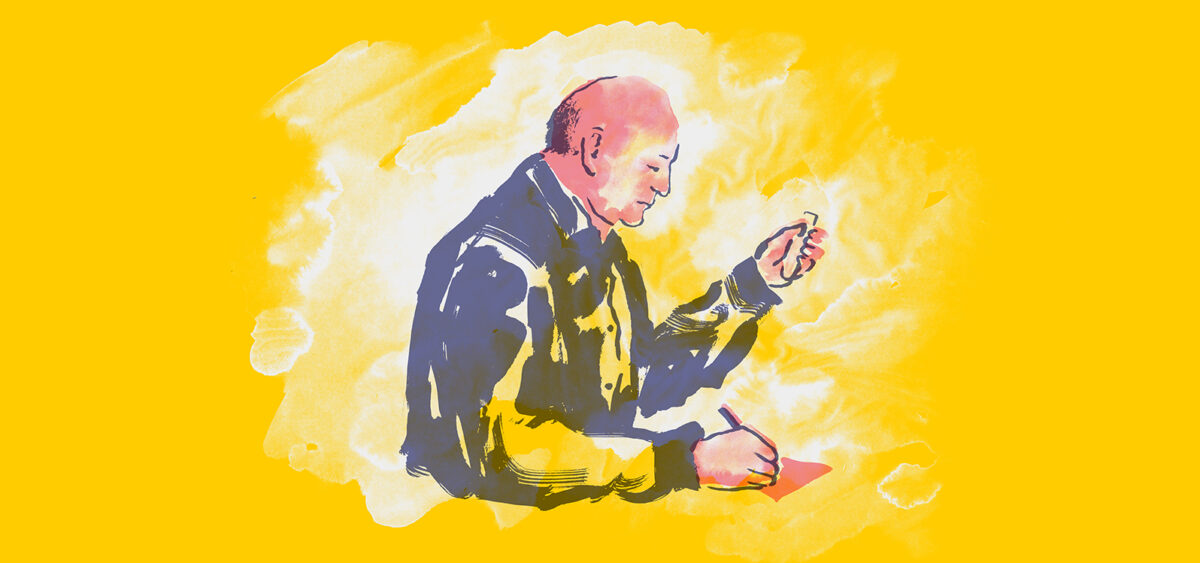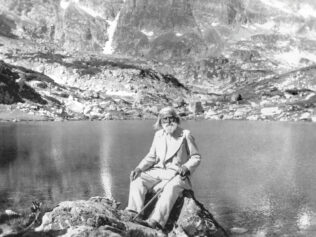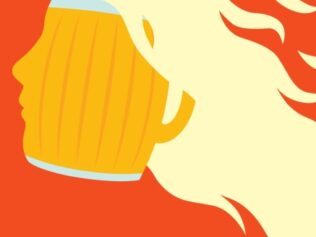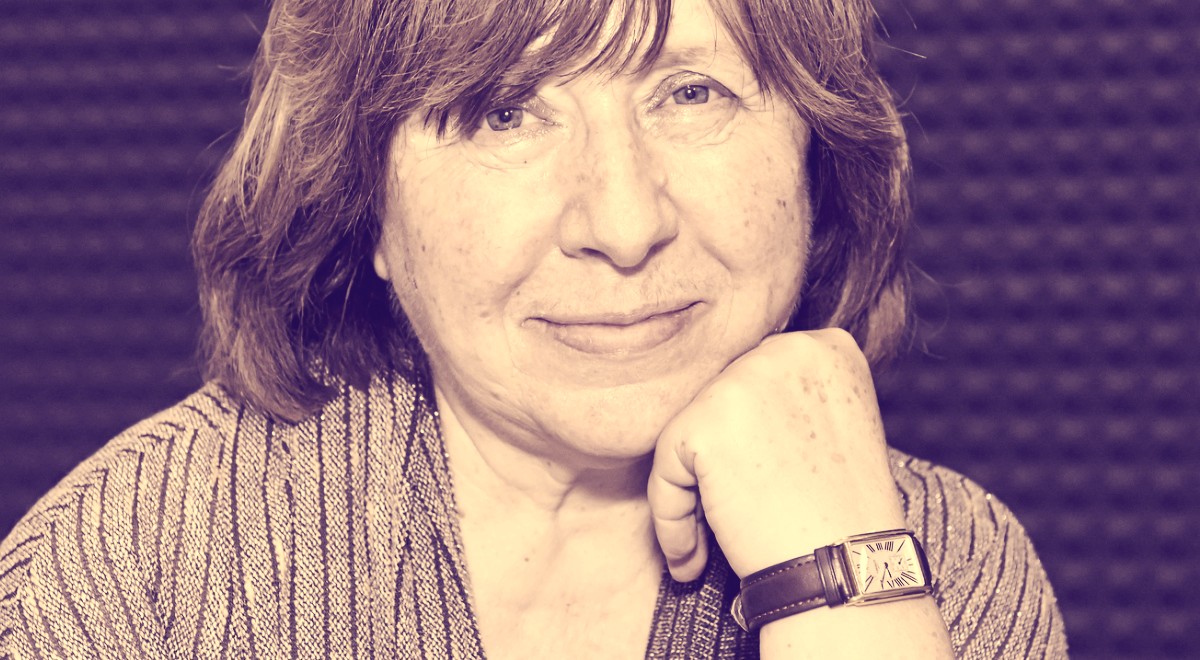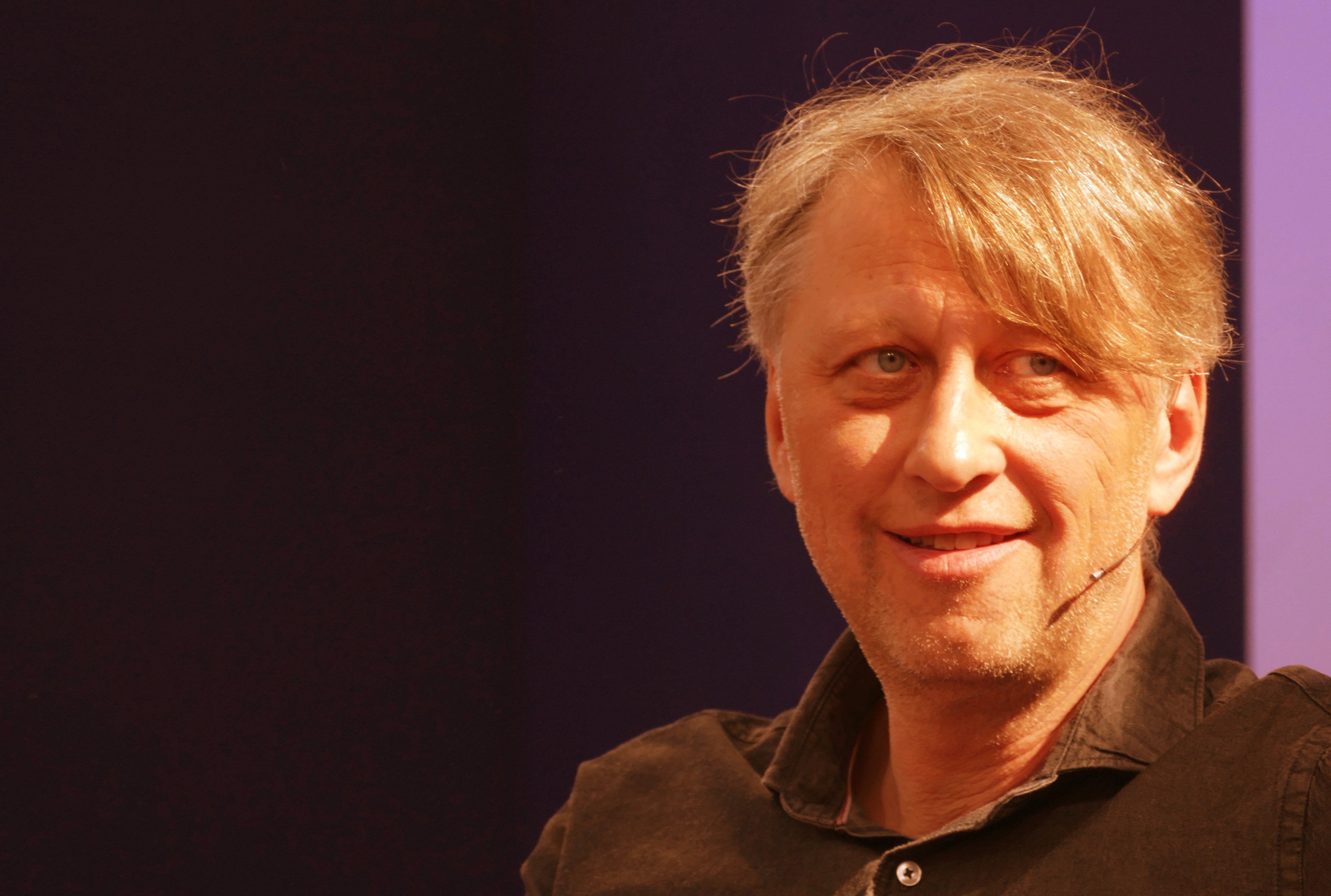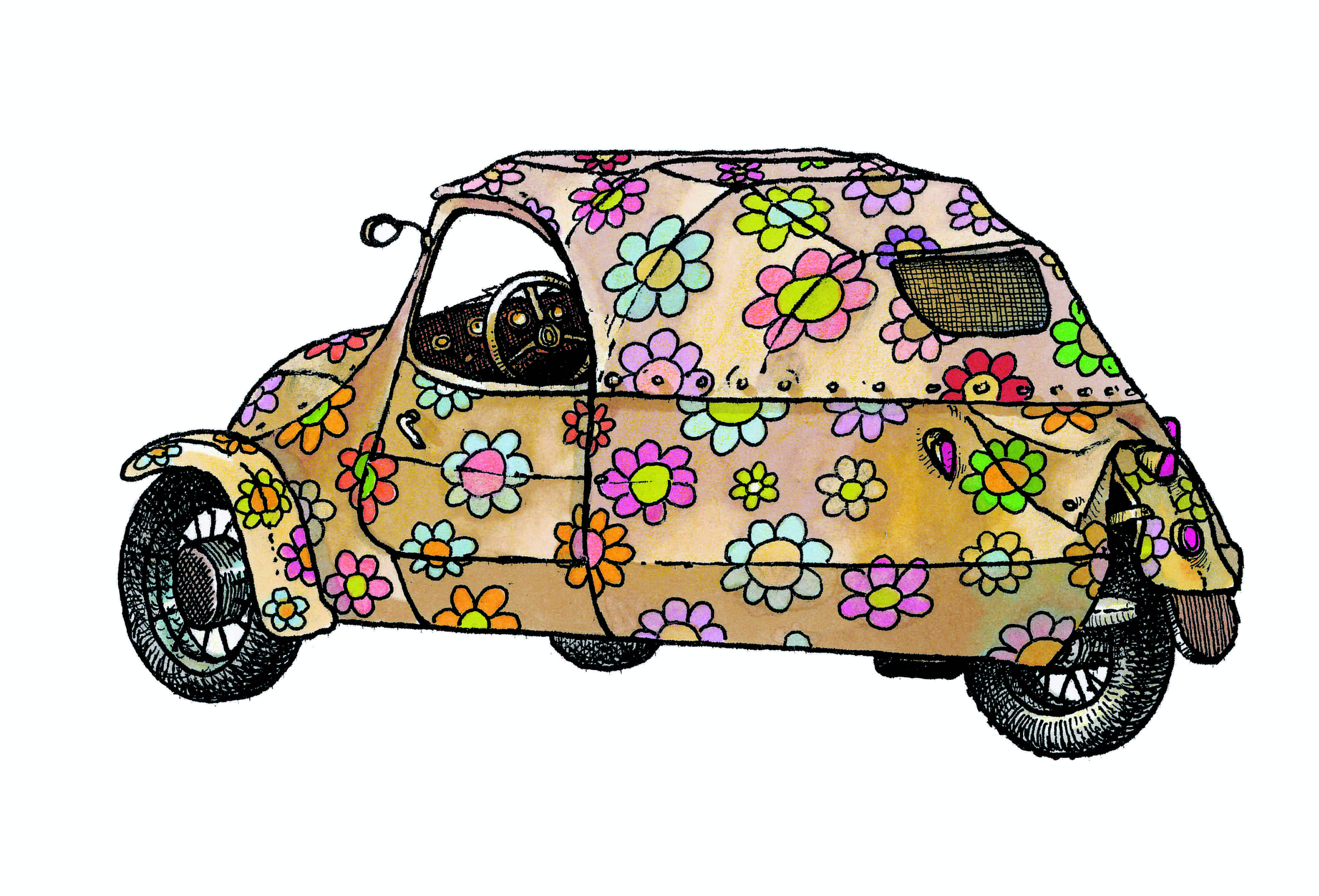
Every day hundreds of people queued at his house for treatment. Jan Mikolášek was a celebrity of his times, yet he shared the tragic, disturbing fate borne across most of 20th-century Central European history: the collapse of the empires, the birth of new nations, two world wars. He lived in the shadow of two totalitarian regimes, too – first when healing top-ranking officials of Nazi-occupied Czechoslovakia, and later the Czechoslovak communist leaders. More recently, Mikolášek was the protagonist of Agnieszka Holland’s latest film Charlatan, which was shortlisted for the Oscars’ Best International Feature Film.
I am a sceptic. If somebody told me today that my condition could be diagnosed just by looking at my urine, I wouldn’t believe it. No-one could do it without modern analytical tools and medical testing. Observing urine was, however, still a common practice in Central Europe some 70 years ago, a tradition that came from German medical manuals, popular among lower ranked medics and rural healers in German-speaking lands, notably in the Austro-Hungarian Empire, where antibiotics were expensive and not easy to obtain. One of the most famous uroscopists was Jan Mikolášek, a Czech herbalist and healer, who allegedly cured the English king George VI by examining his pee.
Magicians, esotericists, aristocrats, Nazis, priests and communists – all were part of Mikolášek’s complex and bittersweet life. Whether King George VI really was a patient of the Czech herbalist is impossible to prove. There is no evidence, nor are there any documents, pictures or mention of it in the press archives of the time. Yet the legend was still alive in his homeland and most probably invented by Mikolášek himself. What is indisputable, though, is that the healer was a celebrity in his native Czechoslovakia.
“He respected and loved herbs, and with their help gave health to the people,” says an epitaph carved on Mikolášek’s grave at Olšany Cemeteries, the largest graveyard in Prague. Jan Mikolášek was born in 1889 in Rokycany, a town found some 20 kilometres east of Pilsen, south-west Bohemia, to the large family of a local gardener. He quickly became interested in herbal medicine. One of his most revered books was the Czech edition of Pietro Andrea Mattioli’s Epistolarum Medicinalium libri quinque – a huge work by the mediaeval Italian physician and scholar, who lived and practised at the Prague court of Ferdinand II, Archduke of Austria and governor of Bohemia.
Following in the steps of his father and grandfather, the young Mikolášek became a skilled gardener. He worked and travelled between the estates of Austrian aristocratic families. During that time, according to his journals, a Gypsy fortune teller predicted that he would heal people using nature. While living in Vienna, he met the ‘Wonder Doctor’ Valentin Zeileis, one of the most famous healers of all time and an electro-physiotherapy pioneer, who at the peak of his popularity treated over 14,000 people per year from all corners of the globe. Zeileis claimed that Mikolášek’s knowledge of herbs and nature would lead him to a great healing career and professional successes.
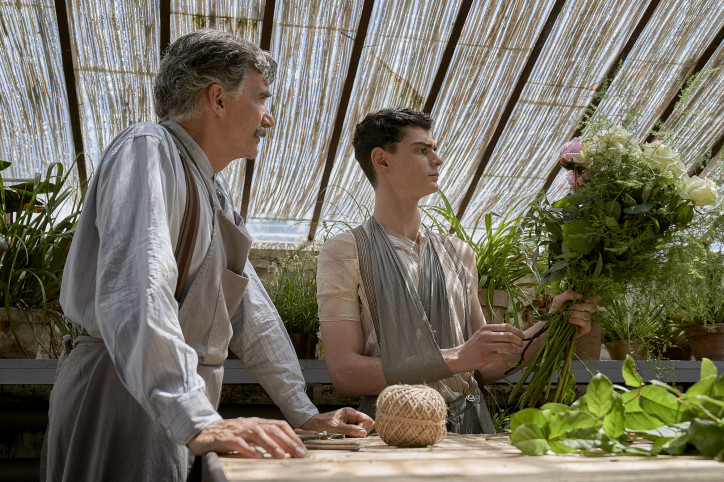
The medical talents of Mikolášek were also noticed in 1918 by a widely-known Czech healer of the era, the then 85-year-old Josefa Mühlbacherová – a witch-doctor, whom people called ‘grandma-pee’. Mikolášek first came to her as a patient. She checked his urine, looked at his face and said: “You’ve got strange eyes, do you know? Who are you?” “A gardener,” he replied. “I see something different there. You will be a healer,” she countered. The old lady took him on an apprenticeship and taught the young Mikolášek how to diagnose disease from urine and use herbs to remove symptoms. First, under her watchful eye, later – more independently.
Uroscopy dates back to ancient times. It was known in ancient Egypt, was mentioned by Hippocrates in Greece and by Galen in Rome. Later, Byzantine treaties developed the practice further and helped to spread it across mediaeval Europe. Mediaeval scholar Bernard de Gordon claimed, however, that uroscopy was so easy that anyone could learn from it what they wished. And – according to the European Museum of Urology – translations of the treaties into the vernacular made the science enormously popular and accessible to people who were not academically-trained physicians: “Soon uroscopy became an easy tool for the numerous quack doctors, charlatans, water doctors and uromantia practitioners who flourished especially in Germany.”
The Celebrity Herbalist
During his training at Mühlbacherová’s house, Mikolášek witnessed daily dozens of people looking for treatment. There he also learnt the secrets of uroscopy. After visual examinations, the old lady was able to write prescriptions and sent people to pharmacies to buy medicine for their illnesses. She never took money for the diagnosis. What she earned was a commission on the medicine sold by the apothecary. But because Mühlbacherová had no formal medical education, the authorities accused and charged her of illegal treatment, a fate her young student would follow some years later.
According to the local Czech chronicler Václav Kovanda, Mikolášek used his new skills for the first time in his hometown to heal his siblings. His brother suffered from nephritis, which Mikolášek cured with infusions; his sister had an acute knee infection and was at risk of a leg amputation, but she was saved with herbal compresses. Soon after, Mikolášek started to admit the sick. He helped them by selling herbal mixtures suitable for their ailments. “Nature works wonders with the help of medicinal herbs, but that’s just half of the process. The other half is the faith to be healed,” he said.
He was a very religious man and many times he stressed that his powers were a gift from God. One day while collecting herbs, he fell asleep on a field of flowers. He dreamt of a figure, an angel, calling him to work. “Collect!” said the figure and pointed at the healer’s chest. “Collect! Work, think and believe nothing but yourself.” After that vision, Mikolášek ordered a human-size sculpture of Christ similar to the figure from his dream, and used to kneel and pray openly in front of it.
His first significant uptake in patients came in 1929 just after he moved to Dobruška, a town in north-eastern Bohemia. There, Božena Tomková, the widow of a gardener, was looking for a partner and someone who could help her to rebuild a huge garden destroyed by a flood. Mikolášek, a skilled and experienced gardener himself, replied to her advert in a newspaper and soon they got married. Not only did he manage to reconstruct the garden, but also started to admit more and more patients. Yet this popularity came with a cost: it also attracted the police, and led to court challenges on healing without a proper license. “Citation after citation, police officers were my daily guests, because doctors in the region were not willing to tolerate such competition and they tried to stop me and halt all my healing activities,” wrote Mikolášek in his diary.
Moreover, his marriage to Tomková was an unhappy one. It lasted only seven years, but they never divorced. The healer lived with her until 1936 and then he moved out. “Perhaps their differing views of the world and perhaps even Jan Mikolášek’s homosexuality were to blame,” suggests Josef Ptáček, a historian from Dobruška. (Incidentally, this is the only mention of Mikolášek’s sexuality that I was able to find in Czech sources – an aspect of his life so accentuated in Agnieszka Holland’s Charlatan.) Mikolášek described his matrimony as not “a marriage of love, but of an unreasonable desire for a peaceful and fruitful life.”
For around a year, the healer stayed in the region. Then he decided to move closer to Prague. Among his patients and guests were increasing numbers of famous people from interwar Czechoslovakia: actors, celebrities, politicians, writers, and even doctors. But with changing times came a shift in borders – meaning more tensions, as well as more German patients, since esotericism was very popular among the German-speaking population at that time.
Between Nazis and Communists
After their occupation of Czechoslovakia in 1939, the Nazis found the crowds by Mikolášek’s house disturbing and called him in for a test. He had to examine 29 bottles of urine and correctly diagnose diseases. Whether it was sheer luck or an informed guess, we will never know. He passed the test with flying colours, knowing only the patients’ ages and gender. “Ladies and gentlemen, have you ever seen anything like this? This is a unique phenomenon throughout Europe,” said one Nazi officer present during the test.
As a consequence, he had to accept Nazi visits and cure top German officials. One of them was Martin Bormann, Hitler’s right-hand man. Mikolášek’s herbal therapy healed him of kidney stones. Kovanda writes that Bormann came to Mikolášek’s house three times. “It was understandable that I would not reject such a man from the door, nor would the doctor chase him away. It would be unnecessary suicide and I never was a hero,” acknowledged Mikolášek in his diaries.
But when the war ended, his contact with the Nazis led to new troubles. The healer was arrested and interned in a camp, along with the Sudeten Germans, Czech collaborators and other post-war prisoners. Once again, luck and his skills saved his life – he continued to practice in the camp and his fame attracted new elites, among them communist leaders whose health had been destroyed during the war. One of them was Antonín Zápotocký, a member of the Presidium of the Communist Party and the deputy chairman of the National Assembly, who was in danger of losing a leg due to gangrene acquired in the Sachsenhausen concentration camp. Mikolášek was able to cure the leg within three weeks, using herbal mixtures and compresses.
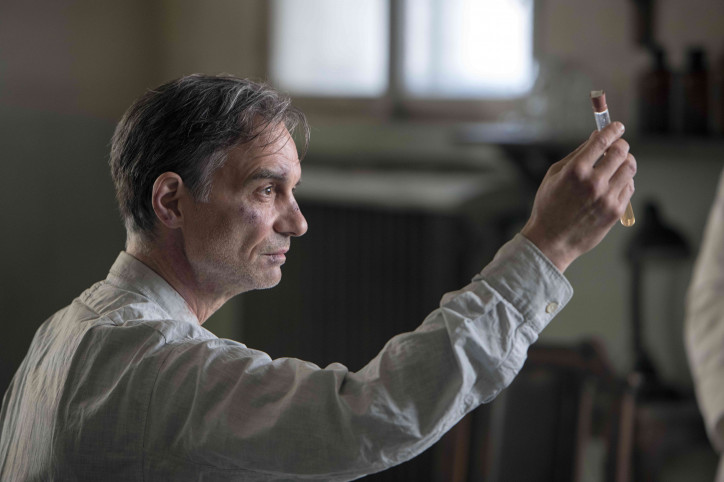
Zápotocký, who a few years later became the president of communist Czechoslovakia, put a safety net around the healer. Not only were visits from the police over, but also the daily criticism and harassment. The communist leader even visited Mikolášek from time to time and considered him a friend. Prosperity and safety allowed Mikolášek to buy a plot of land and build a house in the suburbs of Prague. It wasn’t a fancy house. But it became famous thanks to the owner and pictures of the crowds of people queueing by the doors and waiting for treatment. Locals recall how it was surrounded by a herbal garden with a standing figure of Jesus Christ. Inside, the walls were decorated with lots of pictures of plants and flowers.
“Diplomatic cars parked by the garden, I treated high-ranking ministers and personalities, spiritual dignitaries [and Archbishop Beran], generals, university professors including professors of the faculty of medicine, famous actors, virtuosos [violinist Jaroslav Kocián], composers [J. B. Foerster], writers. But I have to emphasize again that there is nothing supernatural in my healing, that I am not a magician, that I am just a simple herbalist with some experience,” Mikolášek stressed. “Whoever visited him came in with a bottle of urine and left with a package of herbs and faith in curing,” added chronicler Václav Kovanda.
This is exactly how it looked. Every day, hundreds of patients with urine flasks in their hands would form a line by his house. After looking at the pee, he would give patients his own herbal medicines or treat fever with wraps of clay, vinegar and rye flour. According to his own estimate, he treated around 100 to 200 patients each day, using a train wagon’s worth of herbs each month and making for a total of five to five-and-a-half million people across his lifetime.
“I see around a hundred patients a day. Several dozen people, who came a day before, sleep in the village every day and line up sometime at three in the morning,” recalled Mikolášek. “I never take money. In front of me, however, there is a locked metal money box, where the patient can leave a voluntary gift for the Red Cross or municipality.” If the calculations were correct, it meant that he admitted at least two times more patients than the aforementioned Austrian ‘Wonder Doctor’. In his clinic in Gallspach, Zeileis treated 14,000 people each year, according to The New York Times.
Kovanda claims that the healer also exchanged a lot of letters with people across the world. He received urine bottles from the United States and Great Britain. One bottle allegedly belonged to King George VI. In response, the healer sent a package of herbs but to unknown results, because the monarch died shortly thereafter. It remains a mystery whether the king ever received the medicine. A clinic in Chicago even offered him employment. But Mikolášek preferred to stay in Czechoslovakia.
A Fall From Grace
At the peak of Stalinist-era Czechoslovakia, his way of life must have been an eyesore for the communists. People remember how he had a chauffeur-driven Hudson Commodore 1947, a luxury American car, and organized holy masses at his house. But he also sponsored summer camps for children and community investments, like an ice hockey rink and municipal sewers. He also lent his car out for all weddings in the village and always provided a gift to newlyweds. For some time, this and the president’s protection silenced all of his opponents.
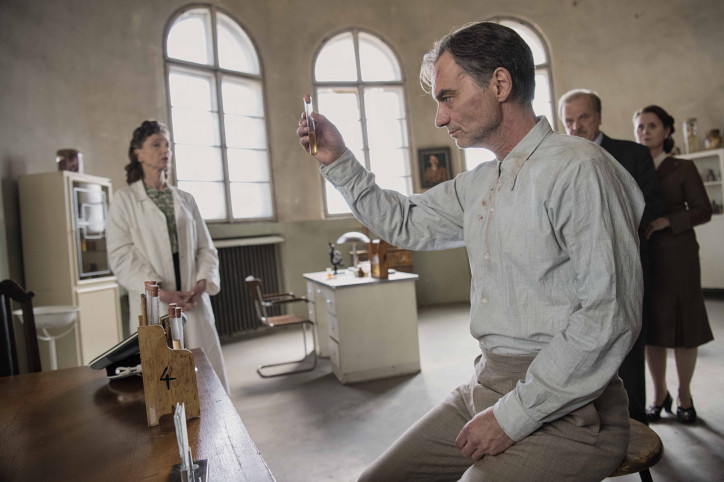
Luck turned away from him again in 1957 after Zápotocký’s death. First, the press started to pursue his unconventional practice and called him a ‘charlatan’. Two years later he was arrested. The police came in the middle of the night. “They didn’t even let him change out of his pyjamas. By the morning, paintings, carpets, a lawn mower and everything else that had any value had disappeared from the house,” reported Kovanda.
The healer was accused of tax evasion, corruption, overpricing of herbs and illegal construction. The court found him guilty and sentenced him to five years of prison, seizure of property (including his large stock of medicinal herbs), a ban on all activities and the loss of civil rights. “And thus, we hope to turn off the glory not only of the miracle doctor Mikolášek, but also the other charlatans similar to him,” the press commented on the verdict. Mikolášek’s former villa was turned into a retirement house.
After his release in 1964, he never came back to healing. He wandered from place to place until his friend in Prague, the medical doctor Karel Urbanek, offered him a place to stay. He lived there until his death from brain necrosis in 1973. For the final time, crowds came to visit Mikolášek during his funeral at St. Vitus Cathedral and later in the parish church of Vinoř. He was buried at Olšany Cemeteries along with his mother and the doctor Urbanek, who had granted him a home for the last years of life.
Controversial, but Caring
Until recently, Mikolášek seemed to have been forgotten in modern Czech history. Once Agnieszka Holland started to work on the film Charlatan, she soon discovered – as she has explained in interviews – that almost everyone on the set knew someone in their family cured by the famous healer. Then the Czech media picked up interest, too, and two books on the herbalist’s life – his memoirs and a biography – were quickly published in his home country.
“I was fascinated by the classic story. It’s intimate and it’s very epic at the same time. And the main character is a mystery, too. Jan Mikolášek is complicated and full of contradictions, internal tensions, and his ego and pride are so great that it was fascinating to meet someone like that,” Holland said about her inspiration.
Mikolášek’s methods were questioned by many ever since the beginning of his practice. Not only was uroscopy regarded by his contemporaries as a very outdated diagnostic tool and medical quackery, but herbalism was already in decline and being displaced by modern medicine. Of course, his way of life – a mixture of Catholicism and flashy wealth – was tough to accept at the peak of the Stalinist era in Czechoslovakia. Especially in a country so devastated by World War II before being taken over by an oppressive communism.
But for Mikolášek himself, his lifestyle represented a way of helping others, quite in contrast to that of his opponents. “I’ve never beaten anyone, I’ve never hit anyone, I’ve never killed millions of enemies, like many of those who won immortality,” he wrote in his diaries. “I was just a herbalist and my job was to alleviate suffering and prolong life. Even if I modestly estimate that out of a hundred people I extended the life of at least one person by one year, it comes to me that for this beautiful country I saved forty thousand years of life and I am happy because I know that I lived a strange but useful life.”


